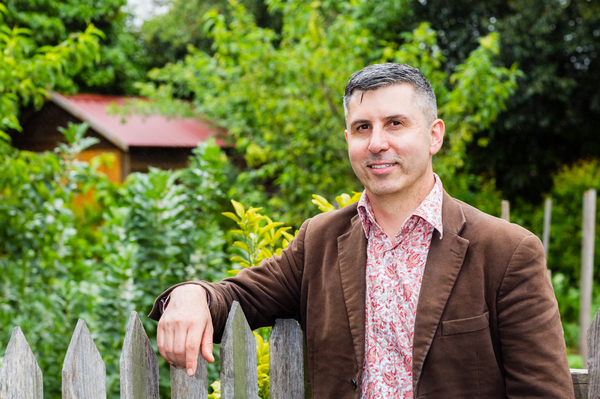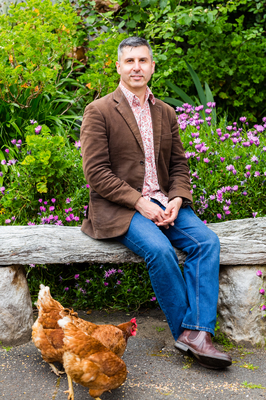
By Luke Voogt
Newtown’s Mary-Jane Walker was getting her hands dirty this week as she prepared to open her heritage garden to the public for the first time.
“It’s been a good incentive to get the garden up to scratch,” she said.
“You work really hard in the months beforehand to get it really beautiful.”
The garden surrounds her historic Newtown home, which was likely to be 168 years old, Mary-Jane said.
The exact age of the house is unknown but in the 1940s its owners found an 1848 coin among the foundations while renovating, she said.
A number of Geelong’s historic figures have called the early-Victorian residence home, such as William Pye and Joseph Shaw.
Pye would become one of the first instructors of what is now Gordon Tafe, while Shaw built many of city’s old churches.
Mary-Jane became the property’s newest owner seven years ago and wanted her garden – which was in a sorry state – to honour the history of the house.
Enter garden designer Stephen Read – who worked for the then Historic House Trust in Sydney – to bring it “back to life”.
“He has a tremendous knowledge of plants and what works in different environments,” Mary-Jane said.
“I’m happy to showcase this design because I believe in his ideas.”
One of the first tasks was restoring three heritage-listed Norfolk pines which were probably as old as the house.
“When we got there they were in a very bad state,” Mary-Jane said.
The trees were now the favourite part of her garden.
“We’ve worked very hard and they are looking incredibly healthy,” she said.
Next was ripping up the property’s 1940s tennis court to create a large edible garden.
It garden has scores of vegetables and fruits, from guavas to pumpkins, and is home to Mary-Jane’s chickens and bees.
“We’re eating things everyday out of the garden,” she said.
“It’s like a farm in the middle of town.”
A practicing artist with a PhD in molecular genetics, Mary-Jane has combined her love of art and science in her garden.
“You’ve got to allow time for a garden to grow and develop,” she said.
Stephen was at the property this week to help Mary-Jane prepare the garden for the public.
He designed it with its historical roots in mind.
“It would have had its own orchard and kitchen garden,” he said, “there were no supermarkets back then.”
Stephen chose plants which would grow with limited irrigation, like the homes of colonial Victoria.
“Most of the plants that grow well in a heritage gardens tend to be drought-tolerant.”
One of the garden’s newer and more unique features is its heritage pear tree walk.
Stephen sourced the pear trees from a nursery in Shepparton, which he said would have been commonplace in gardens in the 18th and 19th centuries.
“We thought they might have been varieties that were planted around this house. I think it’s going to look amazing.”
Mary-Jane’s garden will be one of three in the region open on 19 and 20 November for Rotary Victoria’s Garden Designfest.
For more information visit www.gardendesignfest.com.au.







